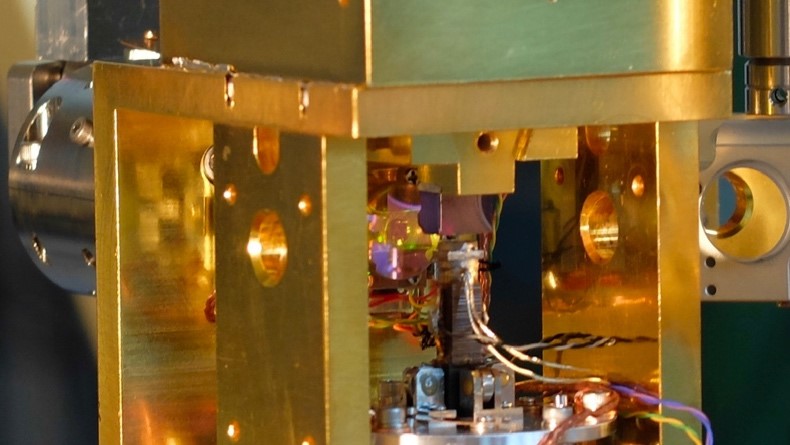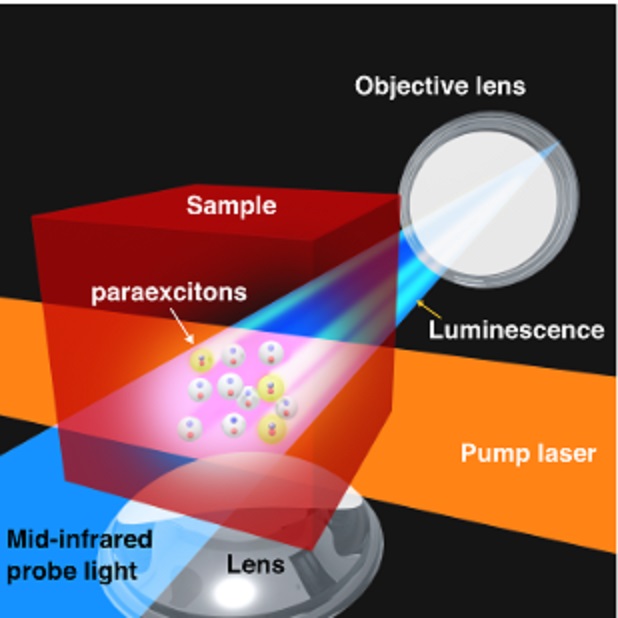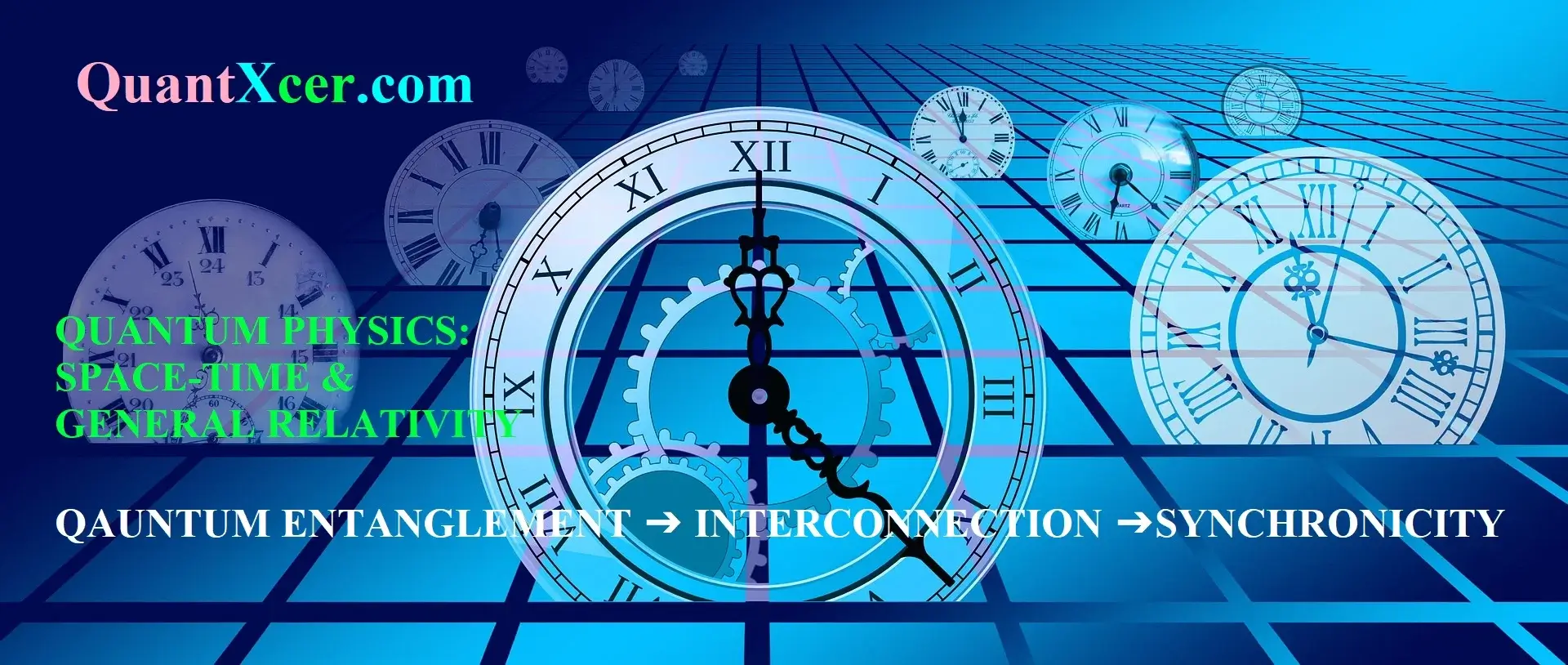The Enigmatic "Fifth State" Of Matter, Bose-Einstein Condensate, Is Created From Quasiparticles
The first quasiparticle-based Bose-Einstein condensate, or the enigmatic "fifth state" of matter, has been produced by physicists. Although these things aren't considered elementary particles, they can still exhibit characteristics of elementary particles like charge and spin.
It has recently been discovered that they can experience Bose-Einstein condensation in the same way as actual particles. This was previously unknown. The discovery is expected to have a substantial effect on the advancement of quantum technology, such as quantum computing.

The procedure for making the substance, accomplished at temperatures only a hair's breadth from absolute zero, was described in a report that was published in Nature Communications.
Bose-Einstein condensates, together with solids, liquids, gases, and plasmas, are frequently referred to as the fifth state of matter. Bose-Einstein condensates, or BECs, were theoretically predicted in the early 20th century but weren't actually made in a lab until 1995. They are also maybe the most peculiar kind of matter, and science still doesn't fully understand them.

When a collection of atoms is chilled to within billionths of a degree of absolute zero, BECs happen. Researchers frequently employ "magnet traps" and lasers to gradually lower the temperature of a gas, typically made up of rubidium atoms. The atoms scarcely move at this extremely low temperature and start to behave quite strangely. They enter a similar quantum state, like coherent photons in a laser, and begin to group together, taking up the same space as a single, indistinguishable "super atom." The group of atoms behaves almost like a single particle.
Although BECs are still the focus of a lot of basic research and are used to simulate condensed matter systems, they might theoretically be used in quantum information processing. Although it is still in its infancy, quantum computing uses a variety of systems. However, they are all reliant on qubits, or quantum bits, that are in the same quantum state.
The majority of BECs are made from diluted gases of common atoms. However, a BEC formed of unusual atoms has never been accomplished before.
Exotic atoms are those in which a proton or electron has been swapped out for a different subatomic particle with the same charge. For instance, positronium is a rare atom consisting of an electron and a positron, the electron's positively charged anti-particle.
Another illustration of this is a "exciton." The energy of light striking a semiconductor is enough to "excite" electrons to move from an atom's valence level to its conduction level. The free-flowing electric current created by these excited electrons effectively converts light energy into electrical energy. The "hole" left behind when the negatively charged electron makes this trip can be seen as a positively charged particle. Positive hole and negative electron are drawn to one another and become bonded.
This electron-hole pair functions as an electrically neutral "quasiparticle" known as an exciton when combined. A quasiparticle is a particle-like object that isn't one of the standard model's 17 fundamental particles but nevertheless has attributes like charge and spin that are characteristic of elementary particles. Because the exciton quasiparticle is essentially a hydrogen atom with one positive hole in place of its single positive proton, it can also be referred to as an exotic atom.
There are two types of excitons: orthoexcitons, in which the electron's spin is parallel to that of its hole, and paraexcitons, in which the electron's spin is anti-parallel to that of its hole (parallel but in the other direction).
Other phases of matter, such as electron-hole plasma and even exciton liquid droplets, have been produced by electron-hole systems. The goal of the study was to determine whether a BEC could be created from excitons.
Since it was initially theoretically postulated in 1962, direct observation of an exciton condensate in a three-dimensional semiconductor has been avidly sought for. Nobody was aware of the possibility that quasiparticles could experience Bose-Einstein condensation in the same manner as actual particles, according to the researchers at quantxcer - The holy grail of low-temperature physics, if you will.
Because of their extended lifetime, the paraexcitons produced in cuprous oxide (Cu2O), a mixture of copper and oxygen, were regarded to be one of the most promising possibilities for generating exciton BECs in a bulk semiconductor. In the 1990s, attempts to produce paraexciton BEC at liquid helium temperatures of about 2 K had been made, but they had failed because far lower temperatures are required to produce a BEC out of excitons. Because they are too transient, orthoexcitons cannot attain such a low temperature. However, it is known from experiments that paraexcitons have a very long lifetime of over a few hundred nanoseconds, which is sufficient to cool them to the necessary temperature of a BEC.
The team employed a dilution refrigerator, a cryogenic apparatus that cools by combining two isotopes of helium and is frequently used by scientists trying to develop quantum computers, to trap paraexcitons in the majority of Cu2O below 400 millikelvins. Then, they used mid-infrared induced absorption imaging, a sort of microscopy that makes use of light in the middle of the infrared range, to directly view the exciton BEC in actual space. As a result, the team was able to obtain precise measurements of the exciton density and temperature, which allowed them to identify differences and similarities between exciton BEC and conventional atomic BEC.
The team's next task will be to look into the dynamics of how the exciton BEC originates in the bulk semiconductor as well as the dynamics of exciton BEC collective excitations. Building a platform around a system of exciton BECs is their ultimate objective. This will allow them to better understand the quantum mechanics of highly linked qubits and shed more light on the system's quantum features.
